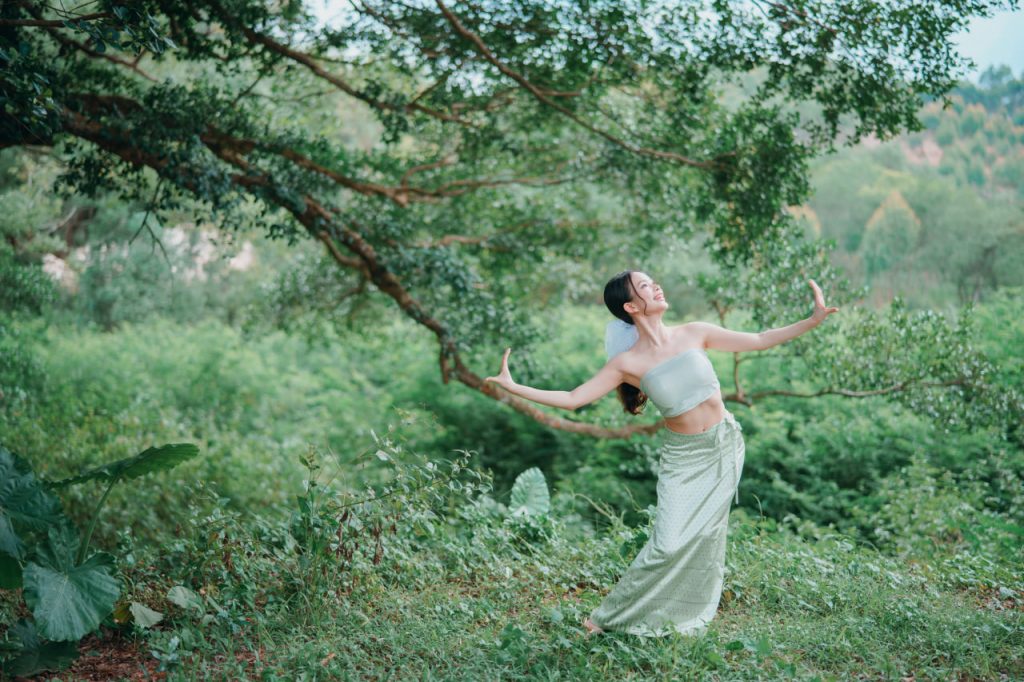In a world obsessed with movement, stillness is a radical act — especially in dance. Yet when we take our practice into nature, stillness isn’t just allowed… it’s essential.
Before You Move, You Listen
Outdoors, choreography doesn’t begin with music or mirrors — it begins with attention. The rustling of leaves. A bird calling in the distance. The hum of insects. You sit, breathe, and listen. It’s not passive — it’s presence. And it’s how your body learns the rhythm of the space before your feet ever take a step.
The Power of a Pause
Stillness isn’t an absence — it’s a container. It holds anticipation, curiosity, connection. In the forest or meadow, standing motionless can be more powerful than leaping. You become a sculpture of breath and awareness. The wind moves, and you respond. Your heartbeats become part of the choreography.
Being Witnessed by the Land
When you’re still, you’re no longer just a visitor in nature — you’re seen. The earth recognizes you not as someone passing through, but as someone participating. Animals don’t scatter. The breeze wraps around you like a shawl. You belong.
Slowness as Rebellion
In modern life, movement often means rushing. But outdoor dance invites slowness. It challenges you to feel each shift in weight, each toe against the soil. Slow is not less — it’s more. More intention, more contact, more depth.
Let Silence Lead
Not every dance begins with sound. Some begin with silence — a long, luxurious one. In the quiet, your body will know what to do next.
And sometimes, the most profound dance… is the one that starts with a pause.
